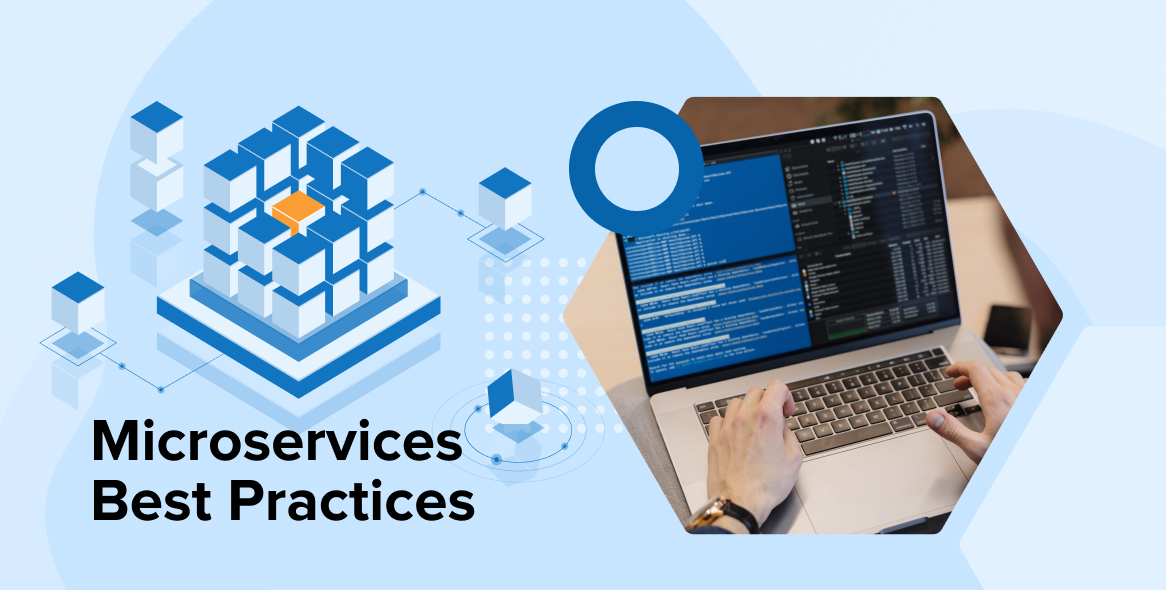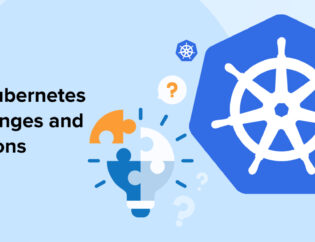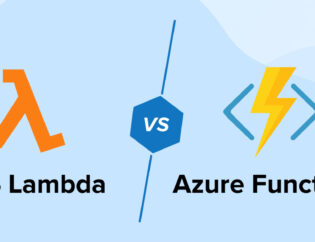
Microservices is an architectural pattern that involves the development and design of software as a collection of small and independent services that interact over well-defined lightweight application programming interfaces (APIs) to meet business requirements. The main aim of microservices architecture is to help software development companies to accelerate the process of development by enabling continuous delivery and development.
At its primitive phase, each of these microservices acts as an individual app in itself. In the past few years, microservices architecture has gained immense popularity as it offers several benefits over monolithic architectures such as:

- Higher scalability
- Faster time to market
- Higher maintainability
- Easy and faster deployment
- Increased modularity
- Easy and quick troubleshooting turnaround times
For all these benefits, you might wonder what challenges you’re going to face. You’ll face challenges such as security, testing, design, and operational complexity. But you’re not required to worry about these challenges as we have the best solution available. Just by adhering to some of the below microservices best practices, you can create a whole microservices ecosystem that is more effective, improves productivity and free of unwanted architectural complexity.
Phase 1: Planning and Organizing
1.1 Check Whether Microservices Architecture Best Fits the Requirements
Microservices architecture should be planned and designed based on the custom business requirements. The first step in the process is to decide whether Microservices architecture will best fit for the custom requirements or not. So, make sure to study your requirements carefully. It will help you to decide which architecture pattern you must follow. Also, don’t forget to determine that your program can be segmented into value-added operations while maintaining its key features and functionalities by executing the necessary research.
Let’s understand this through an example where you want to build a server-side enterprise application which has the below mentioned requirements :
- Supports various clients including native mobile applications, desktop browsers, and mobile browsers.
- Allows 3rd party application integration.
- It should be capable of handling requests by executing the business logic, accessing databases, sending/receiving messages with other systems, and returning an HTML/XML/JSON response.
- Includes all the necessary business operations and services. They are complex in nature.
To develop an application that follows above requirements, illustrate an architecture that structures the application as a coordinated group of loosely coupled, and collaborating services. And each Service should be:
- Highly maintainable and testable – For faster development and deployment.
- Loosely coupled with other services – So, it won’t affect other services and allows each team to work independently on their separate service(s).
- Independently deployable – To deploy services without coordinating with and impacting other team members.
- Have the ability to be developed by a small team – which is important for better productivity.
These we can achieve through Microservices architecture as it offers numerous benefits such as:
- Enhanced maintainability – each service is somewhat small which can be easily understood and changed.
- Better testability – as we mentioned, the services are smaller, so they can be tested thoroughly and quickly.
- Better deployability – you can independently deploy each service.
- It allows you to manage development efforts around autonomous teams. Each team has the ability to develop, test, deploy and scale its services without depending on other teams.
Now, let’s see when not to use microservices architecture. Monolithic architecture can be a better alternative when
- The application complexity is less. It should have a small number of functionalities to include and be simple to develop.
- The development team size is small.
1.2 Define Microservices
You must draw a precise difference between your company operations, services, and microservices. Without this, you may develop large microservices. Because of this under-fragmentation, the microservices methodology will not be useful.
On the opposite side of the table is the prospect of developing an intense number of microservices. This will lead to an excessively fragmented architecture. Note that in order to operate and maintain a microservices architecture, an experienced operational staff is required.
Another challenge that you might face while using such services is deciding how to partition the system into microservices. We can say that it is an art, but you can find several strategies that can help you with this:
- Decompose using business capability
- Define microservices using business capabilities. A business capability often refers to business objectives like,
- Customers Management (Responsible for Customers)
- Supplier Management (Responsible for Suppliers)
- Order Management (Responsible for Orders)
- Define microservices using business capabilities. A business capability often refers to business objectives like,
- Decompose using domain-driven design subdomains.
- Domain Driven Design refers to the app’s problem space- the entire business as the domain.
- A domain includes multiple sub-domains and each one of them is related to different functions of the business.
- Identifying subdomains requires proper knowledge of the business and its structure. It can be best identified using an iterative approach. One can start from
- Organization structure: Different groups or departments in the organization
- Key objective: Every subdomain has a key objective to follow.
- Example: Sub-domains for an education platform are
- Lecture Management
- Schedule Management
- Payment Management
- Attendance Management
- Exam Management, etc.
- Decompose using a use case or verb and determine services responsible for certain actions such as a Shipping Service that’s responsible for complete shipping of orders.
- Decompose using resources by determining a service responsible for all functions on resources of a given type such as an Account Service responsible for handling user accounts.
1.3 Build Teams around Microservices
Creating separate teams to manage multiple microservices entails that these teams have the required expertise and tools to develop, implement, and maintain a given service. Make sure that the teams should be adaptable and strong enough to manage their activities independently without spending much time in communicating.
Here are a few factors and challenges that you need to consider while building teams around microservices.
- Each team should have clear objectives.
- Developers should be aware of the partial rework that they need to face while executing the inter-service communication mechanism.
- Implementing requests that span more than one service can be more challenging.
- Testing the interactions that take place between services can be complicated.
- Implementing requests that span numerous services demands more coordination between the teams.
Phase 2: Designing
2.1 Adopt Single Responsibility Principle
As we all know, Microservices have focused responsibilities that help to investigate incidents and monitor the status of each service that connects to a particular database. You might first not consider the Single Responsibility Principle while designing microservices but it should be applied to the various levels of software programming such as methods, classes, modules, and services where each of these levels states that they must have a single responsibility component. This phrase is concrete but it still doesn’t explain how large or small the responsibility should be or what the responsibility is for each method, service, class, or module. Apart from this, you’ll get various benefits by implementing SRP such as:
- Understandability and learning curve: While splitting the responsibilities not just among microservices but also between smaller methods and classes, the entire system becomes easier to learn and understand.
- Flexibility: It provides flexibility to combine independent microservices in various ways depending on the configuration.
- Reusability: It allows you to reuse the microservices and their components having a single, narrow responsibility.
- Testability: You can write and maintain test cases easily for each microservices, classes and methods with independent concerns.
- Debuggability: If the tests fail while obscuring a single production method or class, we can immediately detect where the bug is and thus it accelerates the process of software development.
- Observability and Operability: If the microservice has only one responsibility, the performance issues become easier to detect as the profiling results become more informative. As microservices are decentralized, it can run on different servers and still work together for an application. If any microservice gets a higher number of hits than others, we can allocate a larger server for that specific microservice.
- Reliability: Microservices architecture designed using SRP can increase reliability. If any microservice is under maintenance, others can still serve their responsibilities.
So, to sum up, we have an interesting quote from O’reilly that says:
“Gather together those things that change for the same reason, and separate those things that change for different reasons.”
This is one of the best fundamental principles to create a good architectural design. It signifies that a microservice, class, function, subsystem, or module should not have multiple reasons to change.
Let’s understand it with an example:
An online store can have a microservices architecture like this:

